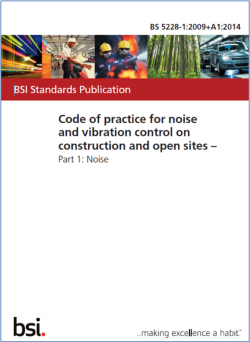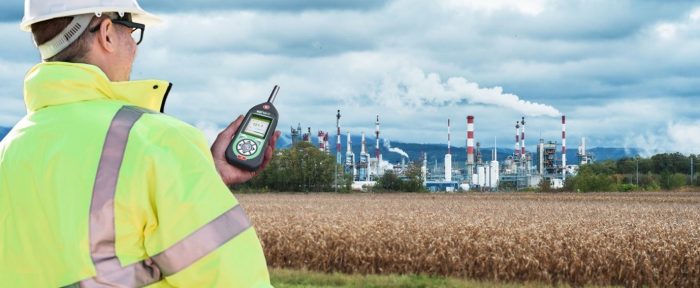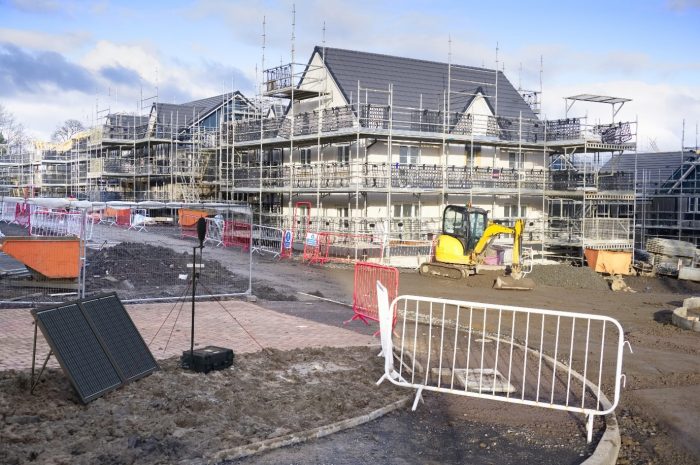How to Measure – Construction Noise

Introduction
Demolition and construction sites can be a significant emitter of noise and vibration and as such are tightly controlled by Local Authorities and the various Environmental Agencies of the UK. Due to the unique nature of this industry, there are specific guides and standards to control these parameters.
When it comes to construction sites, the noise and vibration standard includes occupational noise exposure as well as environmental impact, but for the sake of this application note, we are just looking at the environmental noise
BS5228-1:2009 Code of practice for noise and vibration control on construction and open sites – Noise.

Activities on construction sites are governed by numerous regulations and standards. Noise and Vibration are specifically dealt with in BS 5228:2009, which comes in two parts covering Noise and Vibration respectively, each of which looks at exposure to workers from a health and safety point of view as well as environmental impact and the likelihood of complaint.
There is a very prescriptive process in the standard regarding environmental noise, which involves modelling the potential impact from plant on a site before it is up and running. This allows an operator to provide details to the Local Authority as part of a Section 61 application for consent and will guide the Authority in setting limits at site boundaries or nearby residential properties.
Section 61 Consent
Section 61 of the Control of Pollution Act 1974 applies to construction or demolition sites where there may be significant impact on the neighbourhood due to the generation of noise and vibration.
Companies can apply for consent to operate under section 61, which means that there will be an agreement as to the maximum levels of noise and vibration that are generated, usually with a monitoring plan and actions where limits are exceeded.
As part of the application, an assessment would normally be required according to BS5228-1:2009+A1:2014 as above.
If a company chooses not to apply for section 61 consent, the Local Authority may issue a section 60 notice, which can lead to work being stopped due to complaints of excessive noise or vibration.
Monitoring for section 61 application, using BS5228 would normally be carried out at a noise sensitive receptor property if possible. Once consent is granted the monitoring plan will probably state that fixed monitoring equipment should be placed at or near the site boundary, which will often monitor relatively simple parameters every hour. Modern equipment, such as the dBAngel can send that data to a cloud server, which will then send on alerts to management if noise levels are exceeded.
What is measured?
The conditions put on a section 61 consent, can be almost anything but mostly end up in the form of hourly LAeq levels that must not be exceeded, occasionally with other conditions added in for good measure and sometimes there might be the need to record any exceedances as audio, so that the nature of that sound can be determined.
The equipment for doing this can be quite simple if all you need is hourly measurements of basic parameters. The complexity comes in the way the data is collected, which in modern equipment, such as the Castle dBAngel can be via the internet, where triggers can be set for any number of conditions and alerts sent by email or SMS.
Collecting audio files can also be slightly more challenging as they need someone to listen to them to identify whether the noise trigger event is caused by the site or by something else. We once saw significant exceedances every morning, which turned out to be the dawn chorus!
Equipment
It may be possible to comply with a permit or Local Authority condition manually, whereby a person would take a hand-held sound meter out to various points at intervals throughout the day to monitor for the maximum permitted levels. This would have to be within the agreement of the licencing authority!

More commonly, a noise monitor or monitors, with weatherproofing would be placed at the relevant point(s) around the boundary, or at the noise sensitive receptor if this is possible. This might be a sound level meter in a box, such as the Castle E-box, or a more permanent solution in a cabinet, like the dBAngel, which would be mounted to a pole or boundary fence.

Powering these systems can be done in the form of mains power run from the site, a 12V supply from an external battery box, a solar panel, or a combination of them. There is a separate article on powering environmental sound meters on the Castle Group website.
-

Castle Products
CLICK HERE FOR
Information, technical data, images and pricing of all Castle Group Ltd. products -

Product Rental
CLICK HERE FOR
Hire the best equipment at a fraction of the purchase price -

Calibration Lab.
CLICK HERE FOR
Calibration and repair services from Air Samplers to Vibration Meters -

Training
CLICK HERE FOR
World class safety and environmental courses. On your site or our 4* training facility -

Consultancy
CLICK HERE FOR
Employ our expertise for both simple and more demanding issues.












